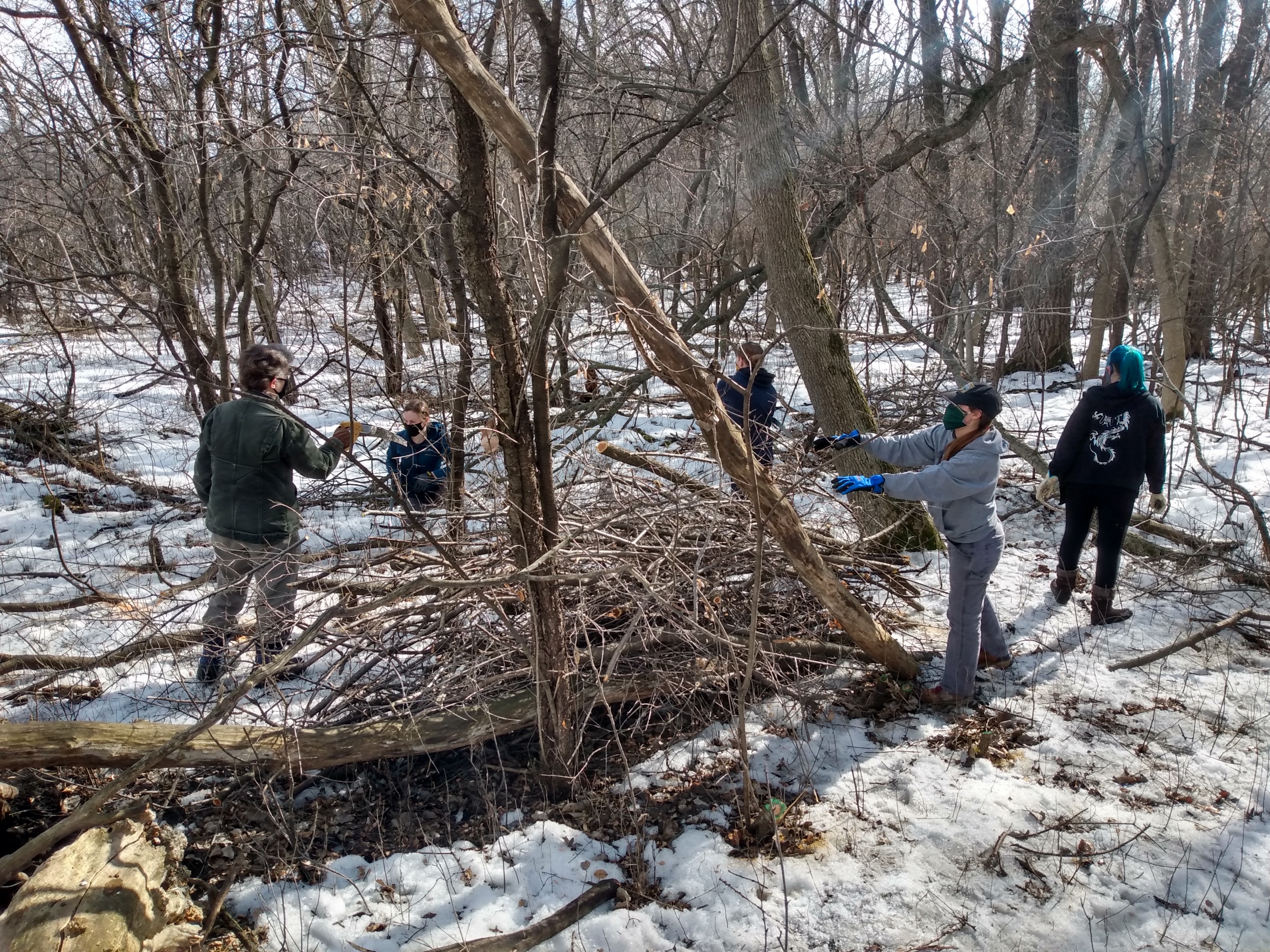Guest Writer: Wooded Wetland Restoration
The pictures in this post were taken in the Vadnais City Hall wooded wetland, using camera traps set up by my fellow VLAWMO volunteer Lucy and I. Looking at the wildlife in the images we collected clearly shows how this wetland is, to them, a home. From a pair of peacefully grazing deer to a coyote soaking up the afternoon sunshine, these animals are just enjoying a day in their natural environment, content and undisturbed.
When choosing locations for the camera traps within the wooded wetland, we tried to find two areas that seemed likely to attract a variety of wildlife. The first location we chose directly faced a large fallen log, since small animals often use such logs to cross the forest floor. As it turned out, this particular log appears to have been near the home of a mouse, who paid it regular nightly visits. The second location we chose also included a fallen tree, but was more open, allowing us to capture images of larger animals. We could see from the tracks and droppings we followed to reach it that it was a common gathering place for deer, and we hoped that it might be frequented by other species as well. Since water sources can also draw wildlife, both sites were located near the edge of a marshy area.
In the end, the images we captured included many deer and squirrels, a mouse, a raccoon, a coyote, a woodpecker, a chickadee, a raven and a few turkeys. All of these animals passed these two locations in the course of several weeks, all within one 20-acre wetland area. These images demonstrate what a large variety of wildlife can live in and enjoy even a comparatively small natural area, and how much value these areas consequently have to offer. By caring for these sites, we are not just helping ensure that the Vadnais Lakes watershed has clean water, we are also improving the lives of a diverse collection of animal species.
However, our work was not limited to observing these animals. Our primary task as VLAWMO volunteers was to remove buckthorn, cutting it down with hand saws, treating the stumps with herbicides, and stacking some of it by the road to be broken down into mulch by city workers. Buckthorn is a prolific invasive species that spreads quickly if not controlled, and removing it will improve the health of this wetland in many ways.
I found the removal work both fun and fulfilling. It was satisfying to watch the piles of brush grow and the stands of buckthorn shrink over time, and at the end of a workday you could clearly see our progress in the size of the opening we had created. After a year of spending most of my class time online and alone, it was refreshing to work as a team with classmates who shared my interests, along with Dawn Tanner, the project supervisor and VLAWMO program coordinator, who was friendly, supportive and knowledgeable about the field that I aspire to work in. Overall, I found this project a great way to get involved in caring for nature while also benefiting the local community.
Isabel LaLonde
Fisheries, Wildlife, and Conservation Biology
University of Minnesota '23


